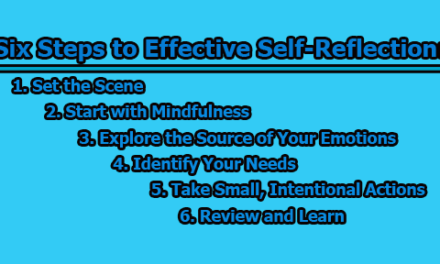Advantages and Disadvantages of Extinction in Psychology:
Extinction is a fundamental concept in psychology, particularly within the realms of behavioral and cognitive-behavioral therapies. It involves the gradual weakening and eventual disappearance of a conditioned response when the reinforcement that previously maintained it is removed. While extinction has proven effective in various therapeutic settings, it also presents certain challenges. Here, we are going to discuss some of the necessary advantages and disadvantages of extinction in psychology.
Advantages of Extinction in Psychology:
1. Reduction of Maladaptive Behaviors: Extinction is highly effective in reducing or eliminating problematic behaviors by discontinuing the reinforcement that maintains them. For instance, in children with attention-seeking behaviors, if a parent consistently ignores tantrums rather than giving attention, the child learns that tantrums no longer result in the desired response, leading to a decline in such behaviors (Iwata et al., 1994). Similarly, in workplace settings, if a boss stops acknowledging disruptive behaviors in meetings, employees may decrease such behaviors over time.
2. Foundation for Exposure-Based Therapies: Extinction is the core mechanism behind exposure therapy, a widely used treatment for anxiety disorders, phobias, and PTSD (Craske et al., 2008). In exposure therapy, patients are repeatedly exposed to feared stimuli in a safe environment without any negative consequences, which helps weaken the fear response. For example, a person with a fear of spiders might be gradually exposed to images of spiders, then a real spider in a controlled setting, leading to reduced anxiety over time. This process helps individuals unlearn irrational fears and build emotional resilience.
3. Enhancement of Adaptive Behaviors: By reducing negative or unwanted behaviors, extinction allows for reinforcement of more appropriate and adaptive responses. This is particularly useful in applied behavior analysis (ABA) therapy for individuals with autism spectrum disorder (ASD). For example, if a child previously engaged in self-injurious behavior (e.g., head-banging) to gain attention, therapists may ignore such behavior while reinforcing alternative behaviors like using words or gestures to communicate (Carr & Durand, 1985). This shift encourages healthier coping mechanisms.
4. Non-Pharmacological Intervention: One of the utmost benefits of extinction-based techniques is that they offer an effective, drug-free alternative to treating behavioral and emotional disorders. Unlike medications that may have side effects or lead to dependency, extinction-based approaches rely solely on behavioral modification. This makes extinction particularly useful for individuals who prefer therapy over medication or those who experience adverse effects from pharmacological treatments (Hofmann et al., 2012).
5. Long-Term Behavioral Change: Extinction can lead to lasting behavioral modifications when applied correctly and consistently. Unlike punishment, which may suppress behavior temporarily, extinction restructures learned associations so that the unwanted behavior gradually disappears rather than just being suppressed. This makes extinction an essential tool for sustainable change in behavioral therapy (Madden et al., 2013).
6. Applicability Across Populations: Extinction is a versatile technique that can be used in a wide range of settings and populations, including:
- Children with developmental disorders (e.g., decreasing tantrums in children with ASD)
- Adults with addiction (e.g., reducing cravings through cue-exposure therapy)
- Individuals with anxiety and PTSD (e.g., weakening fear responses through exposure therapy)
- Organizations (e.g., modifying workplace behavior by withdrawing reinforcement for unproductive actions)
Its wide applicability makes extinction a valuable tool in psychology and behavior management.
7. Facilitation of Emotional Regulation: Extinction-based therapies help individuals manage emotions more effectively, particularly in response to stressors, fears, or compulsions. For instance, individuals with OCD (obsessive-compulsive disorder) often engage in compulsions to reduce anxiety. Through exposure and response prevention (ERP)—which is based on extinction—they learn to tolerate anxiety without performing compulsions, leading to greater emotional control over time (Foa & Kozak, 1986).
8. Support for Cognitive Restructuring: Extinction not only changes behaviors but also helps individuals reframe their thoughts and beliefs. In cognitive-behavioral therapy (CBT), extinction principles are used to challenge irrational fears and anxieties. For example, a person with social anxiety may believe that public speaking will lead to embarrassment. Through extinction-based exposure, they repeatedly engage in public speaking without negative consequences, leading to cognitive restructuring—they learn that their fears are unfounded or exaggerated (Hofmann & Smits, 2008).
9. Empowerment of Individuals: By understanding how behaviors are reinforced and extinguished, individuals gain a sense of control over their actions. This is especially important in addiction recovery, where cue-exposure therapy helps individuals resist cravings and make informed decisions. It also empowers parents, teachers, and therapists to effectively shape behaviors without resorting to punishment.
10. Evidence-Based Effectiveness: Numerous studies have validated extinction-based therapies across multiple fields of psychology, from behavior modification in children to treatment of anxiety, phobias, and addiction (Bouton, 2004). Given its strong empirical support, extinction is widely accepted as a core principle in behavioral therapy and learning theories.
Key Takeaway: Extinction offers a powerful, evidence-based approach to behavior change, providing long-term, non-pharmacological solutions that are widely applicable across different settings and populations. When implemented correctly, it reduces maladaptive behaviors, enhances emotional regulation, and empowers individuals to take control of their responses to environmental stimuli. However, it must be applied with consistency and patience, as challenges like spontaneous recovery and extinction bursts can arise.
Disadvantages of Extinction in Psychology:
1. Extinction Burst: One of the most common initial effects of extinction is an extinction burst, where the behavior being targeted for reduction temporarily increases in intensity, frequency, or duration before it begins to decline (Lerman & Iwata, 1996).
Example: A child who has been reinforced with attention for tantrums may initially scream louder or throw objects when their behavior is no longer acknowledged.
Challenge: If caregivers or therapists give in during this phase, the behavior may become even more resistant to extinction in the future.
Extinction bursts can be difficult to manage in therapy or parenting, as they test patience and consistency, requiring strict adherence to the extinction plan.
2. Spontaneous Recovery: Even after a behavior appears to be eliminated, it can unexpectedly return after a period of non-exposure to the conditioned stimulus (Bouton, 2002).
Example: A person overcoming fear of elevators through repeated exposure therapy may feel comfortable for months, only to experience sudden anxiety again one day.
Challenge: This demonstrates that extinction does not erase the original learning; instead, the new learning competes with the old memory.
Spontaneous recovery makes relapse a major concern in therapies that rely on extinction, such as addiction treatment and phobia management.
3. Renewal Effect: Extinction effects tend to be context-dependent, meaning behaviors may reappear in different environments. This phenomenon is called the renewal effect (Bouton & Bolles, 1979).
Example: A smoker who successfully quits in a rehabilitation center might experience cravings again upon returning to their old home or workplace where they used to smoke.
Challenge: Extinction training in one setting does not always generalize to other settings, which is problematic for treatment programs.
Therapists often combat this issue by ensuring extinction occurs in multiple settings, but this can be time-consuming and difficult.
4. Reinstatement: A previously extinguished behavior can return suddenly after exposure to the original unconditioned stimulus (Kalivas & O’Brien, 2008).
Example: A recovering alcoholic who has not had cravings for months may experience intense relapse urges after just one sip of alcohol.
Challenge: This suggests that a single re-exposure to the stimulus can undo extinction effects, making relapse prevention extremely difficult.
Because of reinstatement, total abstinence is often recommended in addiction recovery rather than moderate use.
5. Emotional Responses (Frustration & Aggression): When reinforcement is removed, individuals may become frustrated, anxious, or even aggressive before the behavior fully extinguishes (Iwata et al., 1994).
Example: A child who previously cried to get a toy may start yelling or hitting when the crying no longer works.
Challenge: This can be emotionally distressing for both the individual and those around them, requiring additional support strategies.
In therapy settings, patients may become discouraged when they do not see immediate results, leading them to drop out before extinction effects take hold.
6. Time-Consuming Process: Extinction is not an instant solution—it requires consistency, patience, and extended periods of non-reinforcement for lasting behavior change (Madden et al., 2013).
Example: A parent trying to eliminate nighttime crying in a toddler might need weeks of ignoring the crying before the child stops seeking attention at night.
Challenge: Many individuals lose patience or revert back to reinforcement, unintentionally making the behavior stronger.
In contrast, reinforcement-based techniques often show quicker results, making them preferable in some cases.
7. Context Specificity: Extinction effects are highly dependent on context, which means that behaviors may only be suppressed in certain conditions but persist in others (Rosas & Callejas-Aguilera, 2006).
Example: A student who learns to control interruptions in a therapy session may still interrupt frequently in a classroom setting.
Challenge: This reduces the effectiveness of extinction-based techniques in real-world applications.
This limitation means that practitioners must reinforce extinction training across multiple environments, which adds complexity to treatment plans.
8. Challenges in Implementation: For extinction to work, all sources of reinforcement must be identified and consistently removed—which is easier said than done.
Example: If a child is throwing tantrums for attention, but one parent ignores it while another gives in occasionally, the behavior will not extinguish properly.
Challenge: Inconsistent reinforcement creates confusion and makes extinction less effective.
This is particularly difficult in group settings (e.g., classrooms, workplaces) where multiple people may unknowingly reinforce the behavior.
9. Potential for Other Problem Behaviors: Extinction may lead to the development of alternative, sometimes equally problematic behaviors as a way to obtain reinforcement (Goh & Iwata, 1994).
Example: A child who stops whining for attention may start hitting or throwing objects instead.
Challenge: Without positive reinforcement of alternative behaviors, extinction may fail to produce the desired outcome.
This is why combining extinction with reinforcement for desired behaviors is usually recommended.
10. Ethical Considerations: In some cases, extinction may raise ethical concerns, particularly when used in sensitive populations.
Example: Ignoring a child’s self-injurious behaviors (e.g., head-banging) could be dangerous, even if it is meant to reduce reinforcement.
Challenge: Therapists must balance extinction strategies with ethical considerations to ensure that individuals are not subjected to excessive distress.
In clinical settings, extinction should always be paired with alternative coping strategies to ensure patient well-being.
Key Takeaway: While extinction is a powerful tool in behavioral modification, it is not a perfect solution. The process can be slow, emotionally distressing, and context-specific, making relapse a major challenge. Additionally, extinction requires strict consistency, which may be difficult in real-world applications.
To maximize effectiveness, extinction is best used alongside reinforcement-based strategies, multiple-context exposure, and long-term follow-ups to prevent relapse.
In conclusion, extinction is a valuable tool in psychological practice, offering several advantages in reducing maladaptive behaviors and supporting therapeutic interventions. However, practitioners must be mindful of its limitations and potential challenges, implementing extinction procedures with careful consideration and in conjunction with other therapeutic strategies to optimize outcomes.
References:
- Bouton, M. E. (2002). Context, ambiguity, and unlearning: Sources of relapse after behavioral extinction. Biological Psychiatry, 52(10), 976–986. https://doi.org/10.1016/s0006-3223(02)01546-9
- Bouton, M. E., & Bolles, R. C. (1979). Role of conditioned contextual stimuli in reinstatement of extinguished fear. Journal of Experimental Psychology: Animal Behavior Processes, 5(4), 368–378. https://doi.org/10.1037/0097-7403.5.4.368
- Carr, E. G., & Durand, V. M. (1985). Reducing behavior problems through functional communication training. Journal of Applied Behavior Analysis, 18(2), 111–126. https://doi.org/10.1901/jaba.1985.18-111
- Craske, M. G., Kircanski, K., Zelikowsky, M., Mystkowski, J., Chowdhury, N., & Baker, A. (2008). Optimizing inhibitory learning during exposure therapy. Behaviour Research and Therapy, 46(1), 5–27. https://doi.org/10.1016/j.brat.2007.10.003
- Foa, E. B., & Kozak, M. J. (1986). Emotional processing of fear: Exposure to corrective information. Psychological Bulletin, 99(1), 20–35. https://doi.org/10.1037/0033-2909.99.1.20
- Goh, H. L., & Iwata, B. A. (1994). Behavioral persistence and variability during extinction of self-injury maintained by escape. Journal of Applied Behavior Analysis, 27(1), 173–174. https://doi.org/10.1901/jaba.1994.27-173
- Hofmann, S. G., & Smits, J. A. J. (2008). Cognitive-behavioral therapy for adult anxiety disorders: A meta-analysis of randomized placebo-controlled trials. The Journal of Clinical Psychiatry, 69(4), 621–632. https://doi.org/10.4088/jcp.v69n0415
- Hofmann, S. G., Asnaani, A., Vonk, I. J., Sawyer, A. T., & Fang, A. (2012). The Efficacy of Cognitive Behavioral Therapy: A Review of Meta-analyses. Cognitive Therapy and Research, 36(5), 427–440. https://doi.org/10.1007/s10608-012-9476-1
- Iwata, B. A., Dorsey, M. F., Slifer, K. J., Bauman, K. E., & Richman, G. S. (1994). Toward a functional analysis of self-injury. Journal of Applied Behavior Analysis, 27(2), 197–209. https://doi.org/10.1901/jaba.1994.27-197
- Iwata, B. A., Pace, G. M., Cowdery, G. E., & Miltenberger, R. G. (1994). What makes extinction work: An analysis of procedural form and function. Journal of Applied Behavior Analysis, 27(1), 131–144. https://doi.org/10.1901/jaba.1994.27-131
- Kalivas, P. W., & O’Brien, C. (2008). Drug addiction as a pathology of staged neuroplasticity. Neuropsychopharmacology, 33(1), 166–180. https://doi.org/10.1038/sj.npp.1301564
- Madden, G. J., Dube, W. V., Hackenberg, T. D., Hanley, G. P., & Lattal, K. A. (Eds.). (2013). APA handbook of behavior analysis, Vol. 2. Translating principles into practice. American Psychological Association. https://doi.org/10.1037/13938-000
- Lerman, D. C., & Iwata, B. A. (1996). Developing a technology for the use of operant extinction in clinical settings: An examination of basic and applied research. Journal of Applied Behavior Analysis, 29(3), 345–382. https://doi.org/10.1901/jaba.1996.29-345
- Powers, M. B., Halpern, J. M., Ferenschak, M. P., Gillihan, S. J., & Foa, E. B. (2010). A meta-analytic review of prolonged exposure for posttraumatic stress disorder. Clinical Psychology Review, 30(6), 635–641. https://doi.org/10.1016/j.cpr.2010.04.007
- Rosas, J. M., & Callejas-Aguilera, J. E. (2006). Context switch effects on acquisition and extinction in human predictive learning. Journal of Experimental Psychology: Learning, Memory, and Cognition, 32(3), 461–474. https://doi.org/10.1037/0278-7393.32.3.461

Library Lecturer at Nurul Amin Degree College










